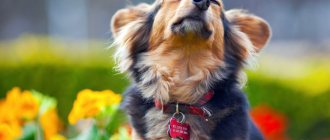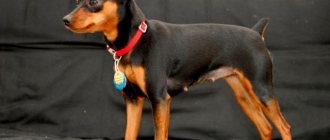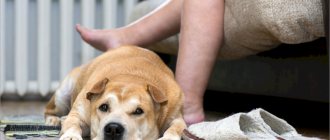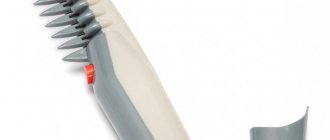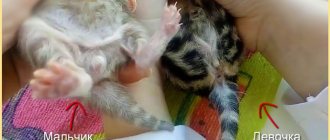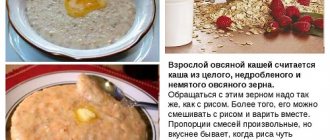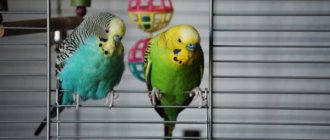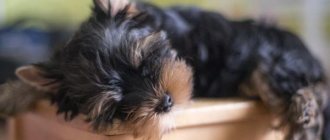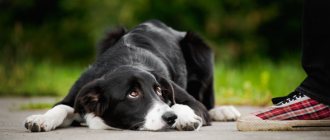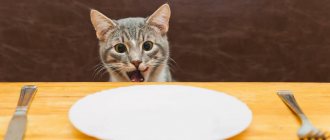Dog grooming equipment
There are quite a lot of different products that can keep your pet’s fur in perfect shape: these are combs, slickers, tangle cutters, combs, etc.
The most common tools, of course, are combs. But, of course, we are talking about special tools suitable for wool, and certain requirements are imposed on them:
- Any pet comb should have blunt teeth, otherwise it can damage the skin. You can check its safety on yourself by running the teeth over your palm; if the teeth catch the skin or an unpleasant sensation appears, then such a tool is not suitable.
- You should choose a tool that has teeth shorter than your pet's fur.
- It is recommended to purchase at least two combs - for initial processing (removing tangles, untangling matted areas) and final processing.
- A comb-comb, the teeth of which are very frequent (the distance between them is 0.5 mm), is intended for combing out parasites. However, if you have a thick coat, it will not be possible to use it for its intended purpose, but it is quite possible to use it during shedding to remove old hair.
If your pet has long, silky hair, then it is better to give preference to a massage brush; for dogs with short hair, a brush with bristles is suitable, in appearance reminiscent of an attribute for cleaning clothes or shoes.
Another important item is a “slicker brush”, which helps to cope with ordinary thick hair. Their working surface is made of metal.
Like combs, slicker brushes should have blunt teeth. You can find similar tools on sale in a variety of sizes, but experts do not recommend purchasing the largest ones. Not only will they not speed up the combing process, but they are also not very convenient to use. For a medium-sized dog, a slicker with sides of 6-7 cm is suitable, for a larger pet - a little larger. When choosing, you should evaluate the strength of the fit of the teeth; they should not dangle freely.
Tangle cutters - this tool allows you to reliably get rid of such troubles as matted tangles. But they do not cut the knots, but unravel them. In fact, this is a great helper for owners of long-haired pets, since almost always when brushing you have to deal with hairballs.
3 types of webbing cutters
The webbing cutters are made from stainless steel. They are equipped with easy-to-use handles. Like other tools, this device is selected based on the size of the pet and the length of its fur.
Scratchers - got this name for their appearance. People call it “rake”. This is one of the most necessary care devices. Here, when choosing, you need to focus on the length of the teeth; the longer the fur, the longer the teeth should be. Brushes are excellent at combing fur, and, in addition, clean the animal’s skin of dead cells and remove old fur during the molting period.
During use, the rake must be held at an angle towards the dog to avoid damaging the skin.
Rubber or silicone gloves and brushes are used to care for smooth-haired dogs that are not burdened with a thick undercoat. They are convenient for getting rid of dead hairs during seasonal molting. For the same purposes, you can use a small piece of suede fabric.
High technologies have affected animal care products, and the Furminator is proof of this. The tool is made of stainless steel, and the plastic handle is equipped with an anti-slip rubber braid. According to studies, up to 90% of old hair can be removed at one time.
The Furminator does not damage the skin or affect new hair and is suitable for almost all breeds, except those that have minimal or no undercoat. The device is very easy to use, just move it without effort in the direction of hair growth.
Means and methods of combating shedding in dogs
There are no special anti-shedding remedies, and people shouldn’t interfere with natural processes. You can help your pet with the simple and accessible procedures mentioned above.
There are cases when champion dogs taking part in exhibitions begin to shed their hair immediately before the performance. A special salon procedure is provided for them. It can be done at home, but to do this you need to have enough free space in the bathroom.
It all starts with swimming in warm water; the temperature should be as tolerable as possible for the animal. When washing, a special softening composition is rubbed into the skin to open the pores. Without washing off the balm, the dog is wrapped in a towel and left alone for a while. Then the product is washed off and the dog is dried with a hairdryer, while carefully combing the skin.
The procedure is lengthy, the animal must be accustomed to such actions and not be afraid of heat and water. A completed cycle helps remove up to 90% of hairs.
Combing different types of fur
There are six types of dog hair in nature, so it is important to know what type your pet is in order to care for it correctly:
- The wool is "regular". It has medium length and thickness. Its owners include many breeds, for example, huskies, Labradors, German shepherds, Spitz. The coat is double - long and hard on the outside, soft and shorter on the inside (undercoat). Like other breeds, these dogs shed twice a year and during this period it is necessary to brush the dogs as often as possible to help get rid of dead hair. The rest of the time, combing is done no more than 2-3 times a week.
- Non-shedding hard coat. Nature has decreed that these breeds have lost the ability to change their coat. But it is still necessary to help them get rid of the old cover, however, combing out will not help here. This is where plucking and trimming takes place. This procedure is necessary for terriers, schnauzers, wire-haired terriers and some other representatives of rare breeds.
- The wool is “smooth”. Despite their scant coat, dogs of short-haired breeds can shed intensively, and removing their hair from carpets and furniture is very difficult. They are combed out with special rubber brushes, but a slicker brush is not useful in this case. This type of care is suitable for dachshunds, Dobermans, Dalmatians, Rottweilers, bulldogs, etc.
- The coat is “curly” and non-shedding. Poodles and some types of terriers have it. The main care product, in this case, is a haircut. Combing is, of course, also done, especially often during the molting period. A slicker brush or a brush with a wire surface is used.
- The wool is “long”. The breeds that wear it are quite impressive and always attract attention - these are Afghan hounds, Briards, setters, long-haired collies and shelties, spaniels, etc. To make the coat look well-groomed, it is necessary to comb it daily with a wide-toothed comb. The advantage of such dogs is that their rich undercoat is suitable for yarn and knitting warm clothes, medical belts, which some pet owners enjoy using.
- Atypical coat. If you are lucky enough to become the owner of a pet of an exotic breed with a unique coat, for example, twisted like a strand, like a bullet, then in this case it is unlikely that you will be able to figure out on your own what to do with the dog’s fur. Consulting a breeder or specialist in this matter will help.
Behavior of dogs during the procedure
The process of brushing a dog can evoke different emotions in a person. Some people think this is boring and tedious, others find it troublesome and fun. Dogs also have an ambiguous attitude towards the process.
- There are animals that are phlegmatic and calm by nature. There are no problems with them. Most pets are agile and energetic.
- It can be difficult with such dogs. Animals must be trained from an early age, trying not to hurt or injure them.
A careful attitude can evoke positive emotions in your pet and create pleasant associations. They will accept their favorite procedure with pleasure and will not be naughty or angry.
At the initial stages, the puppies have to be held, but gradually they get used to it and happily wait for the next brushing.
General recommendations for grooming dogs
Needless to say, almost all dog breeds can be combed, except for a few exotic ones. This is not only bringing the dog into proper shape, but also a hygienic procedure that removes insects that have penetrated the fur, including parasitic ones, and removes old hairs, dirt and dust. And, in addition, this is an excellent massage of the skin, improving subcutaneous blood circulation.
In order for the dog to calmly tolerate combing its fur, it should be introduced to this activity as early as possible. Moreover, many breeds require coat care from an early puppy age. In order not to scare away the animal, it is necessary to use suitable tools, then the dog will feel a minimum of discomfort, and after the event you should not skimp on affection, kind words and, of course, treats.
Here are some recommendations on how to make the procedure as fruitful as possible:
- You need to start the procedure with a wide-toothed comb (this does not apply to animals with short hair).
- In long-haired dogs or breeds with long hair, it is important to pay special attention to certain areas of the body: the ears (applies to spaniels and setters), the muzzle (schnauzers, lapdogs), the hind legs, where the hair forms the so-called pants, and the tail.
- After combing, it is recommended to use a special brush, moving it in the direction of hair growth. You need to start from the head, move the brush along the back, treating the sides and ending on the paws.
- The slicker is most often used for dogs with a normal coat type, but for long-haired dogs it is better not to use this tool.
If brushing your pet seems unattractive and you don’t feel like doing the procedure yourself or don’t have the time, then you can turn to a specialist groomer for help. Armed with a special tool, he is able to tidy up even the most neglected wool.
In addition, a specialist will be able to help if the dog has gotten into thorns, correct the consequences of an unsuccessful haircut and, most importantly, prepare the pet for an important event in a short time.
Rules of care and types: what happens
Shorthair
The following breeds are considered short-haired dogs: pug, toy terrier, miniature pinscher, sharpei, labrador, dalmatian, pit bull, rottweiler, mastino neopalitano and beautiful dachshund .
We don't know about you, but we are crazy about pugs.
